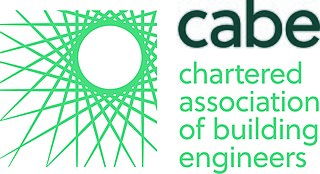Related Research Articles

The Royal Institute of British Architects (RIBA) is a professional body for architects primarily in the United Kingdom, but also internationally, founded for the advancement of architecture under its royal charter granted in 1837, three supplemental charters and a new charter granted in 1971.

The Election Committee is a Hong Kong electoral college, the function of which is to select the Chief Executive (CE) and, since 2021, to elect 40 of the 90 members of the Legislative Council. Established by Annex I of the Basic Law of Hong Kong which states that "the Chief Executive shall be elected by a broadly representative Election Committee in accordance with this Law and appointed by the Central People's Government ." It is formed and performs its selection function once every five years, even in the event of a CE not completing their term. The membership of the Election Committee was expanded to 1,500 under the massive overhaul of the electoral system in 2021. The Election Committee has been criticised for its "small-circle" electoral basis and its composition favouring pro-Beijing and business interests.

The Institution of Engineering and Technology (IET) is a multidisciplinary professional engineering institution. The IET was formed in 2006 from two separate institutions: the Institution of Electrical Engineers (IEE), dating back to 1871, and the Institution of Incorporated Engineers (IIE) dating back to 1884. Its worldwide membership is currently in excess of 158,000 in 153 countries. The IET's main offices are in Savoy Place in London, England, and at Michael Faraday House in Stevenage, England.
The architectural technologist, also known as a building technologist, provides technical building design services and is trained in architectural technology, building technical design and construction.
The Sydney Accord is an international mutual recognition agreement for qualifications in the fields of engineering technology.

Sir Chung-kong Chow, FREng, FCGI, FIChemE, also known as Chow Chung-kong and C.K. Chow, is a Hong Kong businessman and government appointee. He is currently chairman of the Urban Renewal Authority and is a former non-official member of the Executive Council of Hong Kong. He was also chairman of Hong Kong Exchanges and Clearing, which owns the Hong Kong Stock Exchange.

Construction Industry Council (CIC) is the representative forum for professional bodies, research organisations and specialist business associations in the United Kingdom construction industry.
The Institution of Engineering Designers (IED) is a British professional engineering institution founded in 1945. The IED is the UK's only professional body representing those working in the fields of Engineering and Technological Product Design. The membership of the institution work in a diverse range of industries that include: product design and manufacturing; architectural design and construction; mechanical, automotive and aircraft design, design education, IT and computing. The IED is licensed to award three Charterships, including Chartered Technological Product Designer.

Chartered Association of Building Engineers (CABE) is a professional body for building engineers in the United Kingdom and overseas.

A building engineer is recognised as being expert in the use of technology for the design, construction, assessment and maintenance of the built environment. Commercial Building Engineers are concerned with the planning, design, construction, operation, renovation, and maintenance of buildings, as well as with their impacts on the surrounding environment.
Peter Gerald Stewart Murray Hon. FRIBA is a British writer and commentator on architecture and the built environment. He is currently Chairman of New London Architecture and the London Society, in addition to being Master of the Worshipful Company of Chartered Architects. He is a keen cyclist and campaigner for cycling issues.

The Australian Institute of Building (AIB) is a professional society founded in 1951, incorporated in 1955 and granted a royal charter in 1969. The institute is an association of building professionals, associate professionals and technicians engaged in building practice, teaching, or research throughout Australia and overseas. It has chapter offices in Hong Kong and Singapore and had a chapter office in New Zealand until the formation of the New Zealand Institute of Building in 1984.
The Society for Underwater Technology (SUT) is an international learned society for marine science and technology with headquarters in London, England that was founded in 1966. There are branches in Aberdeen (Scotland), Houston (USA), Rio de Janeiro (Brazil), Newcastle (England), Perth (Australia), London (England), Melbourne (Australia), Kuala Lumpur (Malaysia), Singapore, Norway (Bergen), China (Beijing) West Africa (Nigeria), the Middle East (UAE) and new branches in early stages of development in St John's Newfoundland & the Eastern Mediterranean to be based in Cyprus. Membership is open to individuals, companies, and institutions with a genuine interest in the broad field of underwater technology. SUT is registered as a charity in the UK, other branches are constituted as charities or 'not-for-profits' as per local legislation.
Richard Gilbert Saxon CBE is an English architect. He was chairman of Building Design Partnership (BDP), chairman of BE, a vice-president of the Royal Institute of British Architects (2002-2008), Master of the Worshipful Company of Chartered Architects (2005-2006), president of the British Council for Offices (1995-1996) and Chairman of the Joint Contracts Tribunal. He was awarded CBE in 2001 for services to British architecture and construction.
The New Year Honours 1994 were appointments by most of the sixteen Commonwealth realms of Queen Elizabeth II to various orders and honours to reward and highlight good works by citizens of those countries, and honorary ones to citizens of other countries. They were announced on 31 December 1993 to celebrate the year passed and mark the beginning of 1994 in the United Kingdom, New Zealand, the Bahamas, Grenada, Papua New Guinea, the Solomon Islands, Saint Vincent and the Grenadines, Antigua and Barbuda, and Saint Christopher and Nevis.
Queen's Birthday Honours are announced on or around the date of the Queen's Official Birthday. Publication dates vary from year to year. Most are published in supplements to the London Gazette and many are formally conferred by the monarch some time after the date of the announcement, particularly for those service people on active duty.

Deric Daniel Waters or Dan Waters was a British educator, scholar of building science and heritage conservationist. He was the founding principal of the Morrison Hill Technical Institute in Hong Kong from 1969 to 1972, Assistant Director, Education Department of Hong Kong from 1974 to 1980. Waters retired in 1980 and obtained his MPhil from Loughborough University in 1982 and PhD in 1985. He was a Fellow of the Hong Kong Institute of Directors, Fellow of the Chartered Institute of Building, Fellow of the Royal Society for Public Health and an Associate Member of the British Institute of Management.
References
- ↑ CIAT. "Chartered Institute of Architectural Technologists CIAT". www.designingbuildings.co.uk. Retrieved 3 March 2021.
- ↑ CIAT. "Hong Kong Centre (C1)". architecturaltechnology.com. Retrieved 3 March 2021.
- ↑ "The Chartered Institute of Architectural Technologists". www.cita.ie. 4 July 2017. Archived from the original on 30 October 2017.
- ↑ See related page from the European Commission regulated professions database
- ↑ See related page Archived 5 October 2013 at the Wayback Machine on AEEBC website
- ↑ "Architectural Technologists - Charminster, Dorset | David Shaw Partnerships". www.davidshawpartnership.co.uk. Retrieved 3 March 2021.
- 1 2 3 40 Years On: A History of the Chartered Institute of Architectural Technologists by Adam Endacott, published 2005
- ↑ "About". www.bisterarchitecture.com. Retrieved 3 March 2021.
- ↑ CIAT. "Our history". architecturaltechnology.com. Retrieved 3 March 2021.
- ↑ RW (18 May 2005). "BIAT granted Royal Charter". The Architects’ Journal. Retrieved 3 March 2021.
- 1 2 3 http://www.ciat.org.uk – the official website for the Chartered Institute of Architectural Technologists
- ↑ See memorandum of agreement as published on AATO website
- ↑ See November 2009 publication Archived 4 October 2013 at the Wayback Machine from AEEBC website
- ↑ See press release Archived August 4, 2013, at the Wayback Machine
- ↑ See information published by Guernsey Careers Show Archived 4 October 2013 at the Wayback Machine
- ↑ The Brindley is a theatre and arts centre in the town of Runcorn, Cheshire, England, which won the 2008 Open Award for Technical Excellence in Architectural Technology 2008.
- ↑ Information on CIAT student award 2012 as published on Sheffield Hallam University website